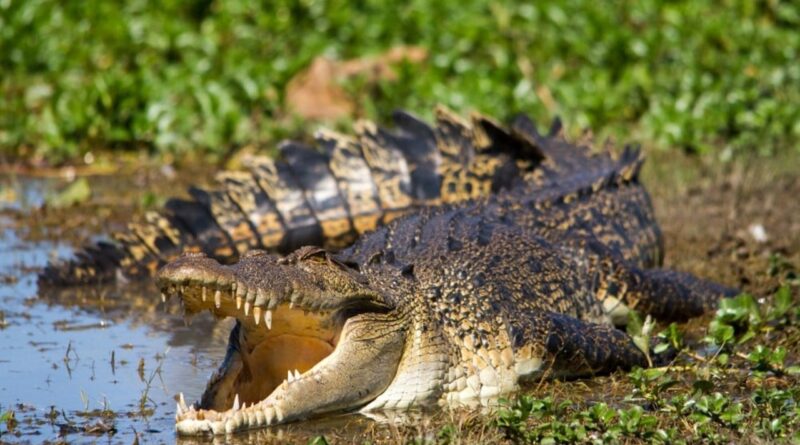Nile Crocodile Behavioral Studies
Nile Crocodile Behavioral Studies The Nile crocodile (Crocodylus niloticus) is not just one of Africa’s most iconic species but also one of the most studied reptiles on the planet. These apex predators, known for their size and ferocity, exhibit a wide range of fascinating behaviors that reveal a complex social structure, advanced hunting tactics, and unique interactions with their environment and human populations. This article explores the many facets of Nile crocodile behavior, drawing on decades of scientific research and observation.
Historical Studies on Nile Crocodile Behavior
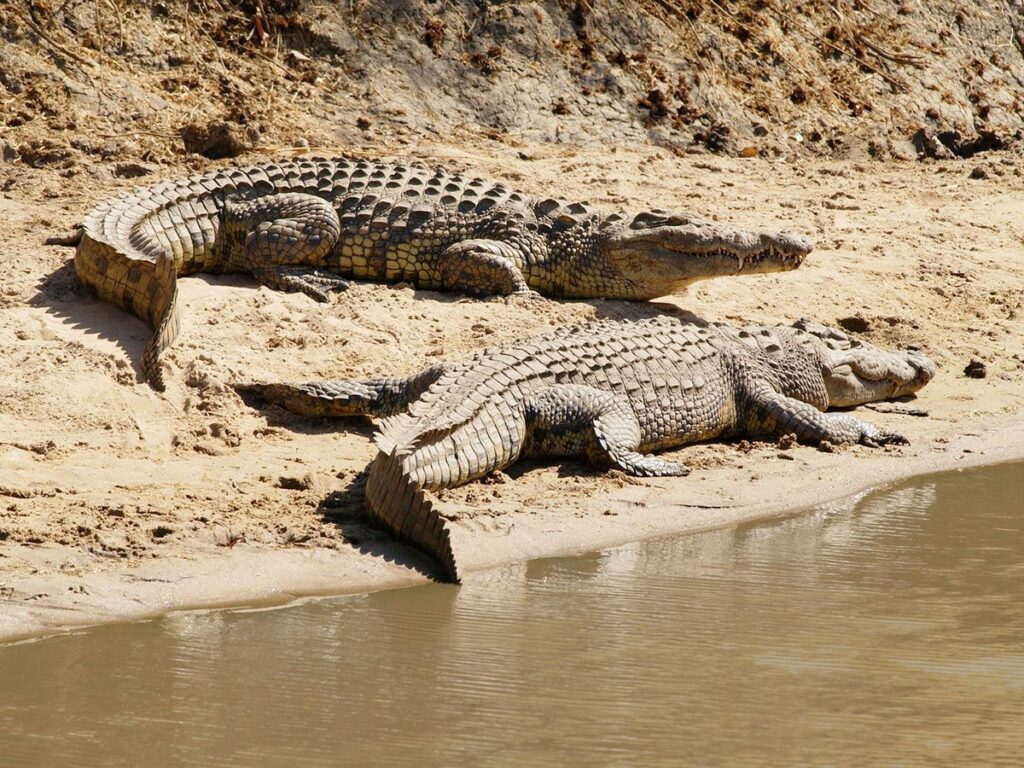
The earliest observations of Nile crocodile behavior came from naturalists and explorers in Africa, who often recorded anecdotes about their encounters with these fearsome reptiles. These early reports, though valuable, were largely based on superficial observations.
Here’s a table summarizing key behavioral aspects of Nile crocodiles based on the article:
| Behavioral Aspect | Description | Key Findings/Examples |
|---|---|---|
| Social Behavior | Nile crocodiles can be solitary or social depending on environmental factors and life stage. | Juveniles form groups for protection, adults bask together but rarely cooperate outside of hunting in specific cases. |
| Communication | Includes both vocalizations (grunts, hisses) and non-verbal cues (body language, postures). | Hatchlings call for their mothers after hatching; adults use body slaps to display aggression or dominance. |
| Hunting and Feeding | Primarily ambush predators relying on patience and stealth. Feeding habits shift as they age. | Adults can take down large prey such as zebras; recent studies show instances of cooperative hunting behavior. |
| Territoriality and Aggression | Males are highly territorial, especially during mating season, defending prime areas. | Intraspecies fights often occur between males during breeding season to establish dominance and territory. |
| Reproductive Behavior | Involves complex courtship rituals, including vocal displays and posturing. Females show high levels of parental care, especially during the nest-guarding and hatchling stages. | Females guard nests vigilantly and assist hatchlings by carrying them to water; parental care continues for several weeks. |
| Human Interaction | Nile crocodiles are responsible for numerous human attacks, particularly in areas with high human-crocodile proximity. Conservation efforts focus on reducing human-wildlife conflict. | Attacks often occur near water sources; studies highlight the need for education in local communities to reduce conflict. |
| Seasonal Behavior | Behavioral patterns change with wet and dry seasons, influencing basking, hunting, and group dynamics. | During dry seasons, crocodiles congregate around shrinking water bodies, increasing competition and social interaction. |
| Environmental Adaptation | Nile crocodiles are adapting to changing environments due to climate change and habitat loss. | Rising temperatures may affect sex ratios of hatchlings; shrinking habitats bring crocodiles closer to human populations. |
| Cognitive Abilities | Emerging research suggests Nile crocodiles have higher cognitive abilities than previously thought, including problem-solving and memory. | Crocodiles have been observed using sticks as tools to attract birds during nest-building season, displaying complex thinking. |
| Technological Advancements | Recent advancements in technology, such as satellite tagging and underwater cameras, have expanded understanding of Nile crocodile behavior. | These tools provide real-time data on movement patterns, hunting behavior, and social interactions previously unobservable. |
As the 20th century progressed, the shift towards systematic, scientific study of the species began. Researchers like Cott (1961) made significant contributions by documenting detailed behavioral patterns, from basking habits to hunting strategies. Modern technologies have since enabled more in-depth research, including underwater observations and satellite tracking, providing an even deeper understanding of their behavior.
Social Behavior and Communication
Group Dynamics
Although Nile crocodiles are often seen as solitary animals, their behavior varies significantly based on age, size, and environmental factors. Juveniles tend to congregate in groups for safety, while adults may bask together in large numbers, particularly during the dry season when resources like basking spots are limited. These gatherings are not cooperative in nature but are instead opportunistic, where individuals tolerate each other’s presence.
Communication
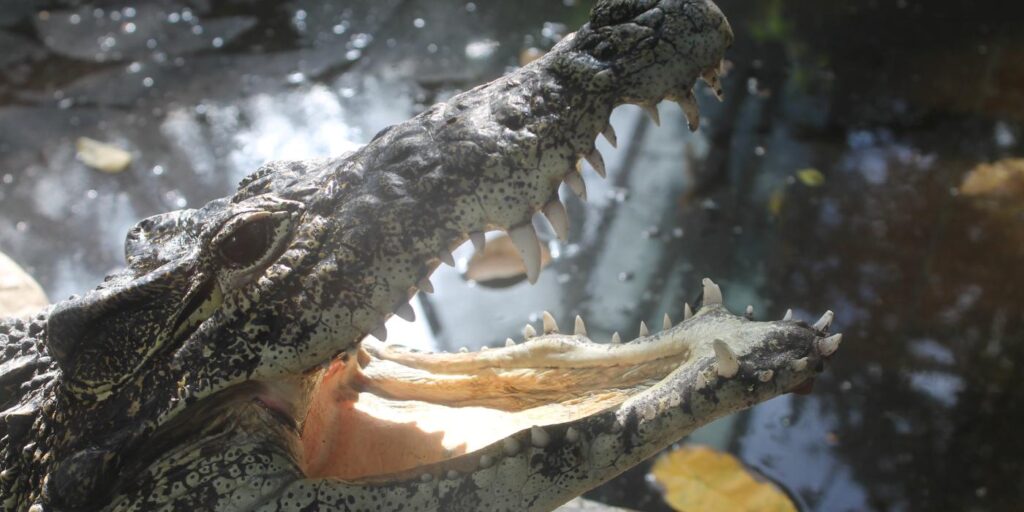
Crocodiles have a surprisingly rich communication system, involving both vocal and non-verbal cues. Their vocalizations include deep grunts, hisses, and growls, often used in social interactions or to ward off potential threats. Hatchlings produce high-pitched calls to alert their mothers when they are ready to emerge from the nest. Non-verbal communication, such as head slapping in water or specific postures, is commonly used during dominance displays or to signal aggression.
Hunting and Feeding Behavior
Ambush Predators
As ambush predators, Nile crocodiles are masters of patience and precision. They rely on their ability to remain submerged and motionless for hours, waiting for the perfect moment to strike. Their long, muscular tails provide explosive power in the water, allowing them to capture prey swiftly. Studies have shown that their ambush tactics are highly efficient, particularly in riverine and lake habitats where they blend seamlessly into the water’s surface.
Diet and Prey Selection
Nile crocodiles have a broad diet that shifts with age. Juveniles primarily feed on insects, small fish, and amphibians, while adults prey on larger animals such as antelope, zebras, and even other predators. Their diet is opportunistic and varies depending on prey availability. Research suggests that crocodiles can go without food for extended periods, surviving on minimal resources when necessary.
Cooperative Hunting
Recent observations have documented instances of cooperative hunting, where groups of Nile crocodiles coordinate their efforts to herd fish or trap prey animals in shallow waters. This behavior, while not as common as in some mammalian predators, challenges the long-held belief that crocodiles are purely solitary hunters.
Territoriality and Aggression
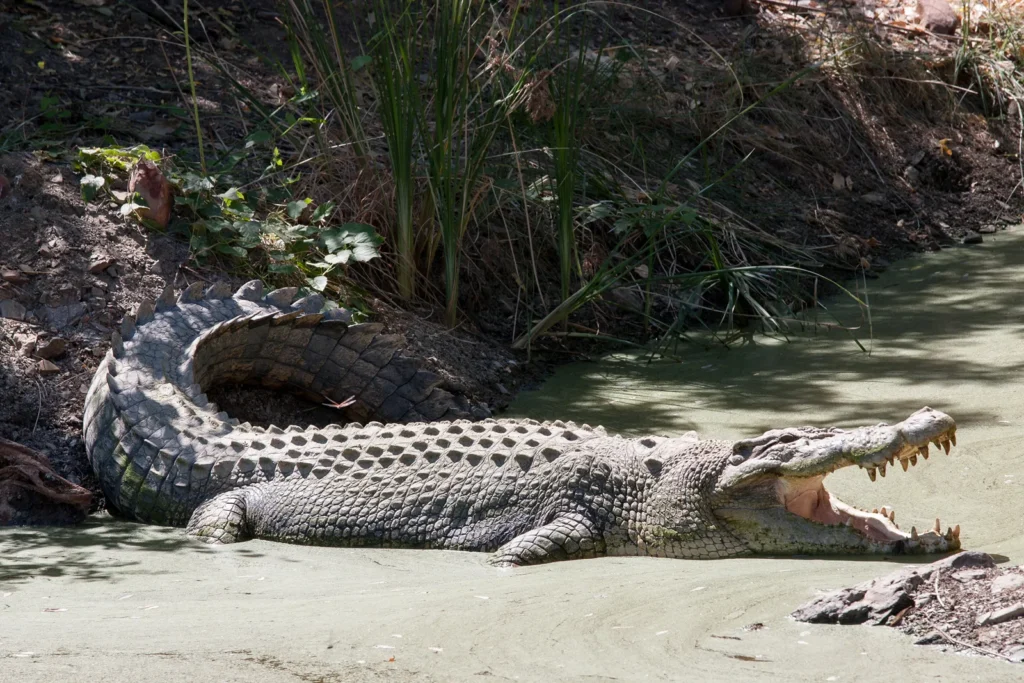
Defending Territories
Nile crocodiles, particularly males, are highly territorial during the mating season. Studies have shown that males defend prime basking and nesting areas with ferocity. These territories are essential for attracting females and ensuring access to resources. Males will engage in aggressive displays, including jaw-snapping and body posturing, to ward off rivals.
Intraspecies Aggression
Aggression among Nile crocodiles is not limited to males; females can also be highly aggressive, particularly when protecting nests. Males engage in violent battles during the breeding season, using their powerful jaws and muscular bodies to assert dominance. These conflicts can sometimes result in serious injuries or death.
Reproductive and Parental Behavior
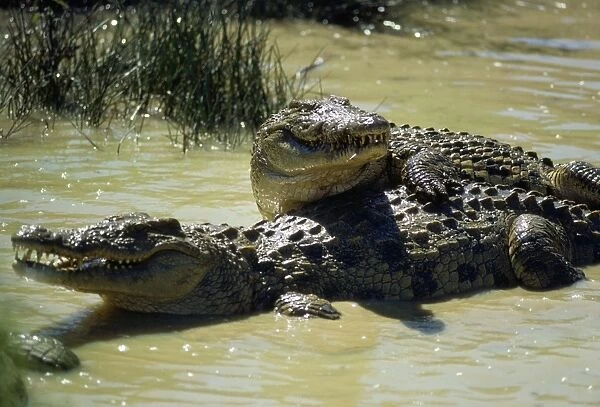
Mating Behavior
Courtship among Nile crocodiles is a complex affair, involving a series of vocalizations, displays, and physical interactions. Males will often nuzzle or rub against females, perform head slaps in the water, and emit deep grunts to signal their intentions. The timing of mating typically aligns with the rainy season when conditions are favorable for egg incubation.
Nesting and Parental Care
Female Nile crocodiles are exceptional mothers compared to many other reptiles. After mating, the female will dig a nest, usually near a riverbank, where she lays her eggs. She guards the nest vigilantly, deterring predators such as monitor lizards, birds, and even other crocodiles. Once the eggs hatch, the mother assists the hatchlings by gently carrying them in her mouth to the water. Parental care continues for several weeks as she protects the vulnerable young from predators.
Human-Crocodile Interaction Studies
Crocodile Attacks on Humans
Nile crocodiles are responsible for more attacks on humans than any other crocodilian species. Studies have shown that attacks tend to occur more frequently in areas where human populations live near water sources frequented by crocodiles. Factors like drought, habitat loss, and the growing human population have led to increased encounters. Researchers study these patterns to understand what triggers attacks and how they can be mitigated.
Conservation and Coexistence
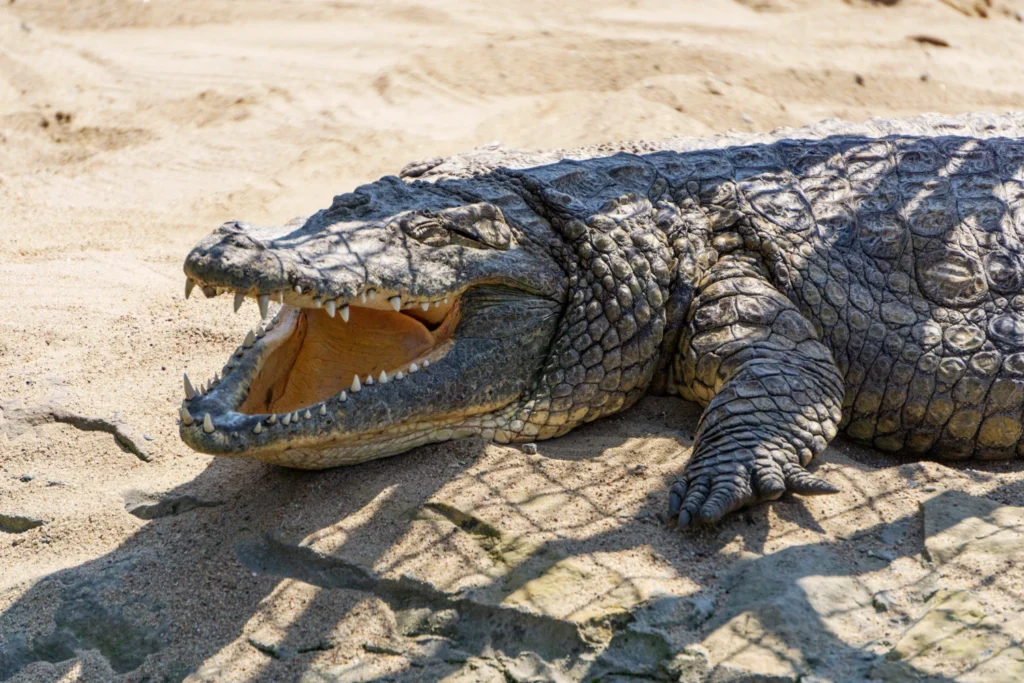
Efforts to promote coexistence between humans and crocodiles are essential, especially as human encroachment into crocodile habitats continues to grow. Conservationists are working on educating communities about safe practices and habitat preservation to reduce conflict and protect crocodile populations.
Behavioral Adaptations to Environmental Change
Seasonal Changes
Nile crocodile behavior is heavily influenced by seasonal changes, particularly the wet and dry seasons. During the dry season, when water sources are scarce, crocodiles tend to congregate around shrinking water bodies, leading to increased social interactions. Basking becomes a crucial activity as crocodiles regulate their body temperature by soaking up the sun.
Climate Change and Habitat Loss
The increasing impacts of climate change and habitat destruction have prompted new studies into how Nile crocodiles are adapting their behavior to cope with environmental stressors. Rising temperatures may affect nest temperatures, which in turn influence the sex of hatchlings. Habitat loss due to urbanization and agriculture has forced crocodiles into closer proximity with human settlements, altering their natural behaviors and increasing the likelihood of conflict.
Emerging Areas of Research
Cognitive Abilities
Recent studies are beginning to explore the cognitive abilities of Nile crocodiles, particularly their capacity for learning and memory. Research has revealed that crocodiles can display problem-solving skills, such as using tools (e.g., sticks and branches) as bait to lure birds during nest-building season. This intelligence, previously underestimated, opens up new avenues for studying crocodilian behavior.
Technological Advancements
Advances in technology, such as drones, satellite tagging, and underwater cameras, have revolutionized the study of Nile crocodile behavior. These tools allow researchers to track their movements over vast distances, observe hunting behavior in real-time, and even study interactions between crocodiles that were previously hidden from view. Genetic research has also provided insights into behavioral differences across various Nile crocodile populations.
Conclusion
Nile crocodiles are far more than mindless predators; they are complex creatures with a wide range of behaviors shaped by their environment, social structure, and interactions with other species—including humans. The continued study of their behavior is essential not only for their conservation but also for fostering a better understanding of how to safely coexist with these ancient reptiles.
The insights gleaned from behavioral research help us appreciate the critical role Nile crocodiles play in maintaining the balance of their ecosystems, and they highlight the importance of preserving these fascinating animals for future generations.
Tips for Observing and Understanding Nile Crocodile Behavior
If you’re planning to observe Nile crocodiles in the wild or are simply interested in learning more about their fascinating behavior, here are some helpful tips:
Be Patient and Observant
- Nile crocodiles are ambush predators and often remain motionless for long periods. Patience is key to witnessing their hunting and social behaviors.
- Early morning and late afternoon are the best times to observe basking and feeding activities, as crocodiles tend to be more active during these cooler parts of the day.
Maintain a Safe Distance
- Always keep a safe distance when observing crocodiles, especially in areas where human-crocodile conflict is common. They can move quickly, both in water and on land, despite their size.
- Use binoculars or telephoto lenses for observation, particularly during aggressive or mating displays, to avoid disturbing their natural behavior.
Understand Their Habitat
- Crocodile behavior is closely tied to their environment. Familiarize yourself with their habitat, such as rivers, lakes, or wetlands, to understand their movements and social interactions.
- Seasonal changes like drought or flooding can affect their behavior. In dry seasons, crocodiles congregate around shrinking water bodies, offering unique opportunities to observe group dynamics.
Look for Social and Territorial Cues
- Nile crocodiles use vocalizations and body language to communicate. Listen for grunts, hisses, and growls during social interactions or territorial disputes.
- Be on the lookout for postures like jaw-snapping or head slapping, which are often signs of dominance or aggression, especially during breeding season.
Observe Nesting and Parental Behavior
- If you’re lucky enough to observe nesting behavior, note the protective nature of the female. They guard nests fiercely and later carry hatchlings to water—a rare example of reptilian parental care.
- Hatchlings often call out to their mothers, and this unique vocalization is a key aspect of early crocodile communication.
Stay Informed on Human-Crocodile Interactions
- If you’re in an area where human-crocodile interactions are common, take the time to learn about local guidelines to minimize conflict.
- Avoid swimming in rivers and lakes known to be inhabited by crocodiles, and follow local advice on safe practices around water bodies.
Use Technology to Enhance Your Observation
- If possible, leverage technology such as drones or wildlife tracking apps to observe from a safe distance without disturbing their natural behavior.
- Satellite tagging and online data from conservation groups can provide insights into current crocodile movement patterns in your area.
Read Up on Recent Research
Keeping up with the latest research can help you better understand Nile crocodile behavior. Studies on topics like cooperative hunting or their cognitive abilities provide valuable context for what you might observe in the wild.
FAQs: Nile Crocodile Behavioral Studies
What is unique about Nile crocodile behavior compared to other crocodiles?
- Nile crocodiles are known for their highly developed social behavior, complex hunting strategies, and remarkable parental care. They can live in groups and may even engage in cooperative hunting, which is rare among crocodiles. Additionally, Nile crocodiles display intense territoriality, particularly during breeding season.
How do Nile crocodiles hunt their prey?
- Nile crocodiles are ambush predators. They stay submerged in water, with only their eyes and nostrils visible, waiting for prey to come close. Using their powerful tails and jaws, they strike quickly, often dragging their prey underwater to drown it before consuming it. They have also been observed working in groups to trap prey, such as herding fish into shallow water.
Are Nile crocodiles social or solitary animals?
- While they are often seen as solitary creatures, Nile crocodiles can be social under certain circumstances. Juveniles tend to stay in groups for protection, and adults may gather for basking or around limited resources during dry seasons. They do not form long-lasting social bonds but tolerate each other’s presence in favorable situations, such as during feeding or nesting.
How do Nile crocodiles communicate with each other?
- Nile crocodiles communicate using both vocal and non-verbal signals. Vocalizations include grunts, hisses, growls, and chirping from hatchlings. Non-verbal communication consists of head-slapping on the water, body posturing, and jaw displays. These behaviors are often seen during social interactions, such as mating or territorial disputes.
What role does aggression play in their behavior?
- Aggression is a key component of Nile crocodile behavior, especially in males during the breeding season when they compete for territories and mates. Fights between males can be violent, involving jaw-clashing and wrestling. Aggression is also used to defend territory, nests, or during feeding when food is scarce.
Do Nile crocodiles take care of their young?
- Yes, Nile crocodile mothers exhibit a high level of parental care compared to other reptiles. After laying eggs in a carefully chosen nest, the female guards the nest for months, protecting it from predators. Once the eggs hatch, the mother helps her young reach the water and continues to guard them for several weeks, ensuring their survival during their vulnerable early stages.
Why do Nile crocodiles attack humans?
- Human-crocodile interactions can turn dangerous, especially in areas where people live near water bodies frequented by Nile crocodiles. Attacks often happen when crocodiles mistake humans for prey or feel threatened. In some cases, habitat loss and reduced food supply force crocodiles into closer proximity to humans, increasing the chances of encounters.
What behaviors do Nile crocodiles exhibit during the dry season?
- During the dry season, Nile crocodiles congregate in smaller, remaining water bodies as resources become scarce. This increases social interactions and competition for space and food. They also spend more time basking to regulate their body temperature and conserve energy when food is less available.
How are Nile crocodiles adapting to climate change?
- Studies suggest that Nile crocodiles are showing behavioral adaptations in response to climate change. Rising temperatures can affect the sex of their hatchlings, as temperature influences the gender of eggs during incubation. Habitat loss and shrinking water sources force them into new areas, which may alter their feeding and social behavior.
How intelligent are Nile crocodiles?
- Nile crocodiles have demonstrated surprising cognitive abilities. Studies show they are capable of problem-solving and may even use tools—such as placing sticks on their snouts to lure birds during nesting season. Their memory and learning capacity are being explored further through ongoing research.
